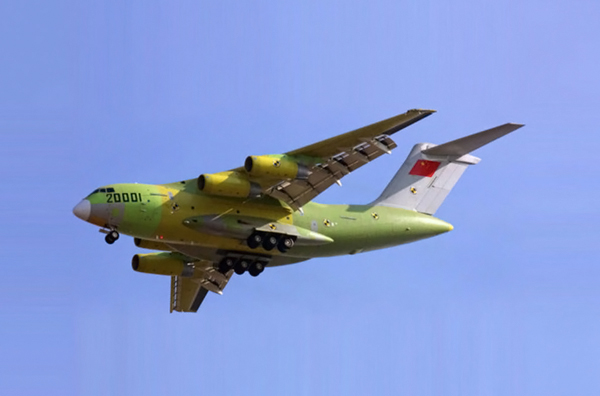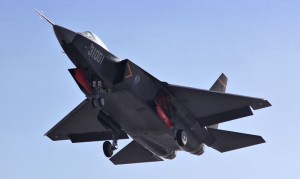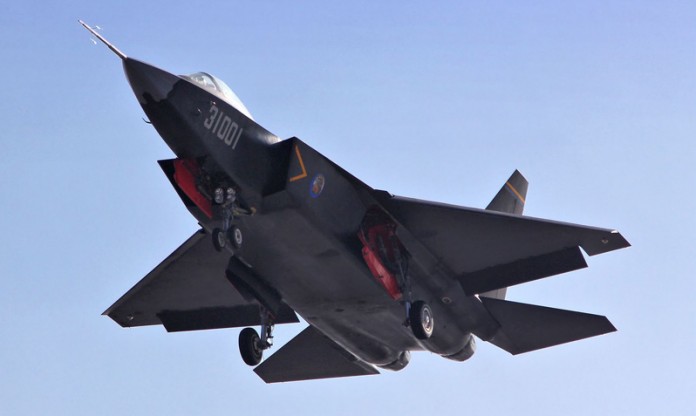
China is expected to unveil its newest stealth fighter next month at the 10th China International Aviation & Aerospace Exhibition to be held next month in Zuhai. The J-31 stealth fighter will be shown to the public in demonstration flight, Chinese officials informed. China is intending the J-31 for export markets, initially as a land based fighter, the stealth plane could also evolve later into a carrier based ‘naval configuration’, thus positioned directly as a competitor for the F-35.

The J-31 made its maiden flight in 2012 and is continuing its flight testing and envelope expansion tests. Due to its high potential as an export aircraft, China is likely to make the effort to display the prototype at China’s premier biennial aviation event.
While J-31 is designed as a stealth aircraft, its systems and design is more comparable to current 4-4.5 generation fighters, thus it is expected to be significantly cheaper than the US Joint Strike Fighter. The prototype is currently powered by two Russian made RD-93 afterburning turbofan but production versions are expected to use the Chinese developed WS-13A, delivering 20 percent more power.
The new-generation heavy military transport aircraft Xian Y-20 Kunpeng, independently developed by China, will also debut at Zuhai. With the maximal takeoff weight of 220 tons and the loading capacity of over 66 tons, the Y-20 is the largest aircraft developed by China. The Y-20 had its maiden flight less in 2012 and is expected to be fielded with the Chinese Army Air Force in 2016.
The airshow is expected to provide a first peek into other new jet fighters that have recently become operational with the Chinese People’s Liberation Army Air Force (PLAAF) and Navy (PLAN).

The Shenyang J-15, nicknamed “Fei Sha” (Flying Shark) in Chinese, is derived from the Russian Su-33, but represents’ a Chinese improved 4th-generation fighter integrating technologies already implemented by China in the J-11B. It is currently positioned as China’s current carrier-based fighter. To fit on carrier deck and hangars the J-15 has foldable wings and strengthened landing gear and arrester hooks and redesigned high-lift devices.
The land based Shenyang J-16 is a new model of the multi-mission J-11, which was based on the Russian Su-30 design. The main improvements introduced in the J-16 are the AESA radar technology and advanced beyond visual range (BVR) air/air missiles that can independently and simultaneously engage multiple targets. The first batch of J-16s was delivered to the PLAAF in May this year.











